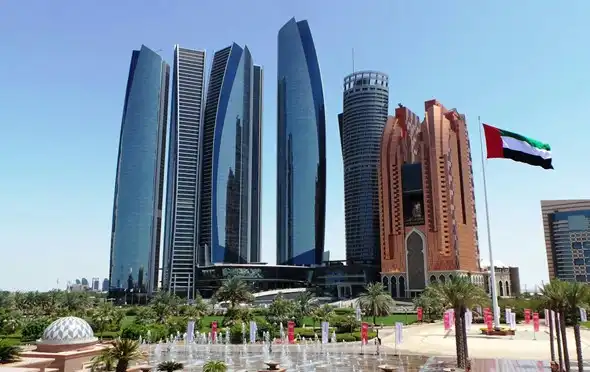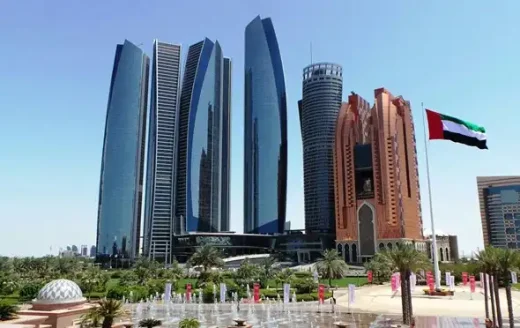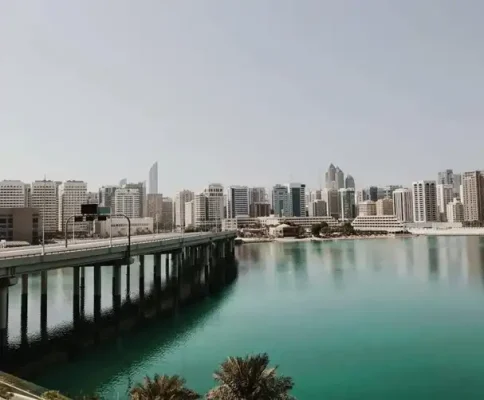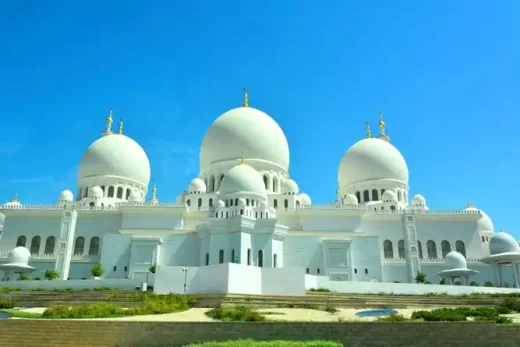Abu Dhabi urban transformation, Sustainable property, Future UAE real estate living
Abu Dhabi’s Urban Transformation: Sustainable Future
13 November 2024
Abu Dhabi’s Urban Transformation : Addressing Challenges, Building a Sustainable Future
The index of residential property value in Abu Dhabi peaked at over 60 points in 2024. As one of the fastest-growing cities in the Middle East, Abu Dhabi has seen rapid urban development over the past few decades. However, this growth has brought challenges related to sustainability, livability, and preserving cultural heritage.
In response, Abu Dhabi has launched ambitious plans to transform itself into a global model for sustainable urban living. A key driver of this vision is the government’s Vision 2030 plan.
Vision 2030: Abu Dhabi’s Urban Planning Blueprint
With a focus on innovation and community, Vision 2030 aims to diversify Abu Dhabi’s economy, enhance quality of life, and build a sustainable future for next generations. Central to the plan is a reimagining of Abu Dhabi’s urban environments.
Several megaprojects are already underway to turn this vision into reality. For example, Masdar City is an emerging global clean-tech cluster and a model for sustainable urban planning. New mixed-use communities like Yas Acres are also being designed to promote walkability, green spaces, and access to amenities.
At the same time, Abu Dhabi recognizes the need to preserve the emirate’s rich cultural history as it modernizes. Sensitive adaptive reuse projects in historic areas like Al Hosn aim to retain heritage sites’ integrity. Museums and cultural centers throughout the city also celebrate traditional Emirati performing arts, poetry, and cuisine.
Innovative Projects Shaping Abu Dhabi’s Urban Landscape
Abu Dhabi’s sustainability projects are reshaping the urban landscape. They showcase the emirate’s commitment to sustainable growth and artistic expression.
Masdar City
Masdar City is a living laboratory where cutting-edge technologies and sustainable practices converge. Walking through its streets, you can feel the harmony between modern living and environmental consciousness.
From its wind towers that provide natural cooling to its extensive use of solar panels for energy generation, Masdar City is a testament to Abu Dhabi’s dedication to creating a greener, more sustainable urban environment. Masdar City buildings use low-carbon cement and 90% recycled aluminum. It strives to achieve the world’s lowest environmental footprint, using renewable energy and autonomous transit.
Saadiyat Island
Saadiyat Island is a cultural and tourism hotspot transformed into a vibrant hub of creativity and artistry. Home to world-class museums, galleries, and performing arts centers, Saadiyat Island is a testament to the city’s commitment to fostering cultural exchange and artistic expression.
Visitors to Saadiyat Island can explore the impressive collection at the Louvre Abu Dhabi and enjoy captivating performances in the Cultural district. The island’s blend of traditional architecture and contemporary design creates a unique atmosphere that celebrates the past and the future.
Yas Island
Yas Island is home to some of the world’s most incredible theme parks, water parks, and motorsports facilities. It has the world’s fastest roller coaster at Ferrari World and the massive Yas Waterworld with thrilling slides and attractions inspired by the UAE’s pearl-diving heritage.
The annual Formula 1 Etihad Airways Abu Dhabi Grand Prix takes place in Yas Island. With its cutting-edge facilities and adrenaline-pumping experiences, Yas Island is a testament to Abu Dhabi’s commitment to creating unforgettable entertainment destinations.
Al Reem Island
Al Reem Island is a prime example of Abu Dhabi’s vision for creating sustainable, mixed-use communities. The Al Reem Island offer various residential options, from spacious villas to luxury apartments for sale in Abu Dhabi.
Al Reem Island is a thriving commercial hub with modern office spaces and retail outlets. It offers a vibrant neighborhood with world-class amenities, from shopping malls to parks and recreational facilities.
Sustainable Urban Design Initiatives
Abu Dhabi has made great strides in promoting sustainable urban design and development. The Estidama Pearl Rating System is the key initiative introduced in 2010. Estidama sets guidelines and ratings for sustainable building practices, water efficiency, waste management, and other criteria. Developers must meet Estidama standards to get building permits.
The city’s bus network provides extensive coverage as well. Cycling infrastructure like the Corniche bike path encourages carbon-free transport. The planned Abu Dhabi metro system will extend its reach. These initiatives reduce emissions and energy consumption from transport.
Parks, gardens, and tree-lined streets help moderate temperatures and absorb carbon. Abu Dhabi has actively increased its green cover, including through the Abu Dhabi Mangrove Initiative to plant over 100,000 mangroves. As the city grows, integrating nature is crucial for human well-being and environmental health.
Future of Urban Design in Abu Dhabi
Abu Dhabi’s urban planning and design are future-focused. Smart meters, sensors, and building automation systems reduce resource use. Technologies like artificial intelligence and big data analytics will enable better traffic management and service delivery.
Electric and autonomous vehicles will reshape mobility. Abu Dhabi has installed electric vehicle charging infrastructure with adoption incentives. Autonomous transit shuttles are being tested as potential mass transport solutions. Renewable energy will power this new electric transport ecosystem.
Conclusion
Abu Dhabi’s bold sustainability goals, visionary urban planning, and commitment to the community set an inspiring future model. Its ambitious urban transformation plans aim to address modern challenges while staying true to its roots.
Comments on guide to Abu Dhabi Urban Transformation article are welcome.
Architecture in Abu Dhabi
Contemporary Architecture in Abu Dhabi, UAE
Al Wathba Birdwalk in Abu Dhabi
Architects: AIDIASTUDIO
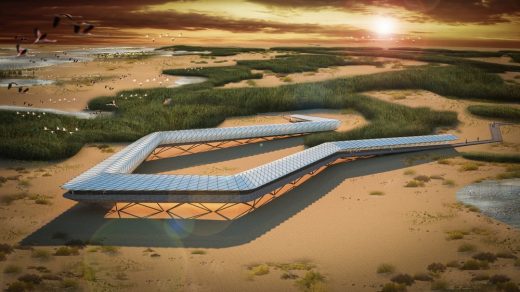
image courtesy of architects
Al Wathba Birdwalk in Abu Dhabi
Abrahamic Family House Abu Dhabi, Saadiyat Island
Design: Sir David Adjaye Architect
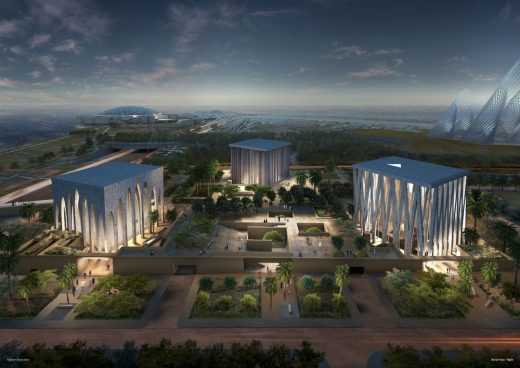
image courtesy of architects
Abrahamic Family House in Abu Dhabi
Natural History Museum Abu Dhabi, Qasr al Hosn Fort
Design: Mecanoo
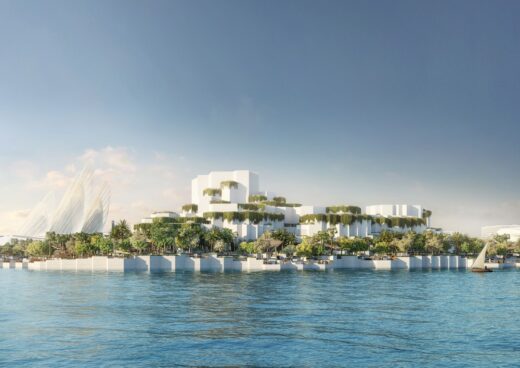
image courtesy of architects practice
Natural History Museum Abu Dhabi
New Miral Headquarters
Design: Godwin Austen Johnson Architects (GAJ)
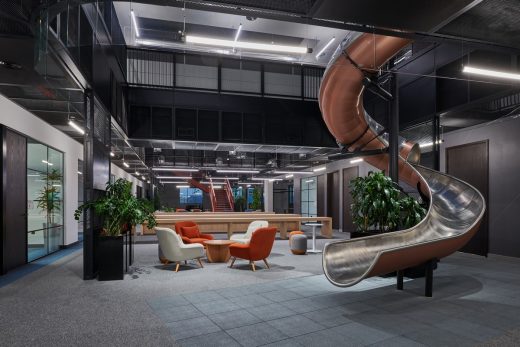
photo courtesy of architects office
New Miral Abu Dhabi Headquarters
Abu Dhabi Architecture Walking Tours
Comments / photos for the Abu Dhabi Urban Transformation, UAE page welcome.

